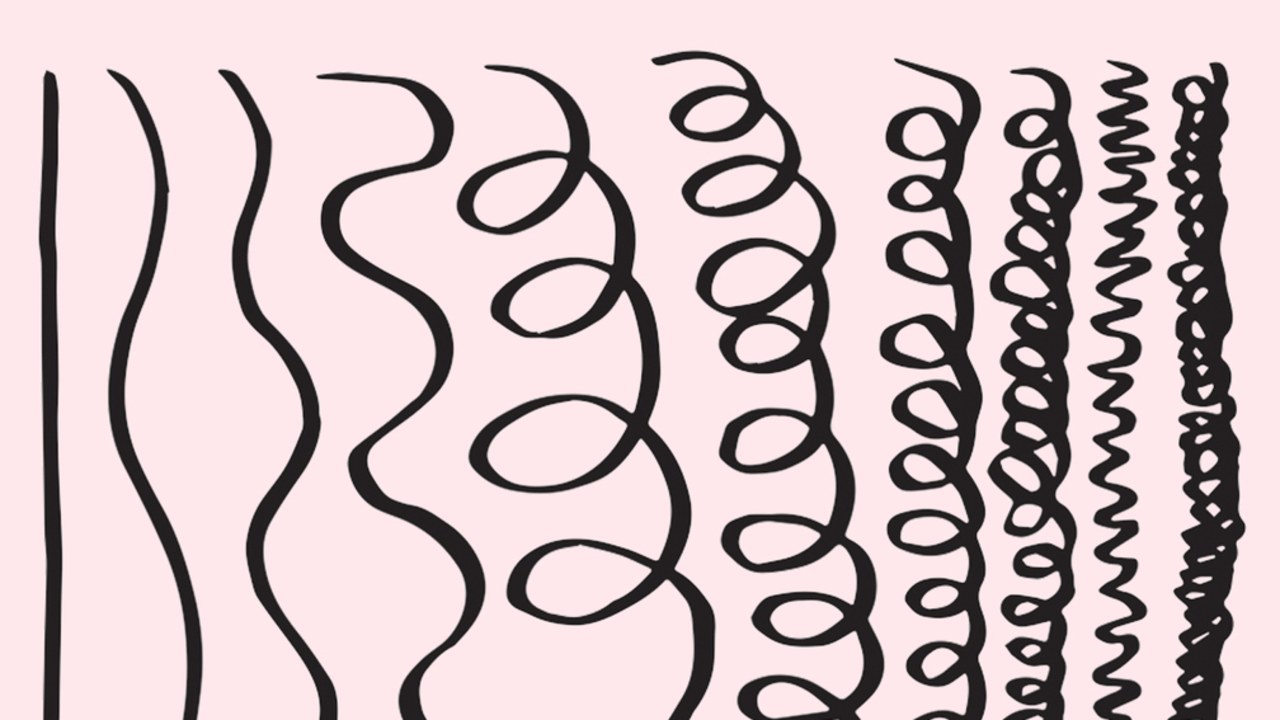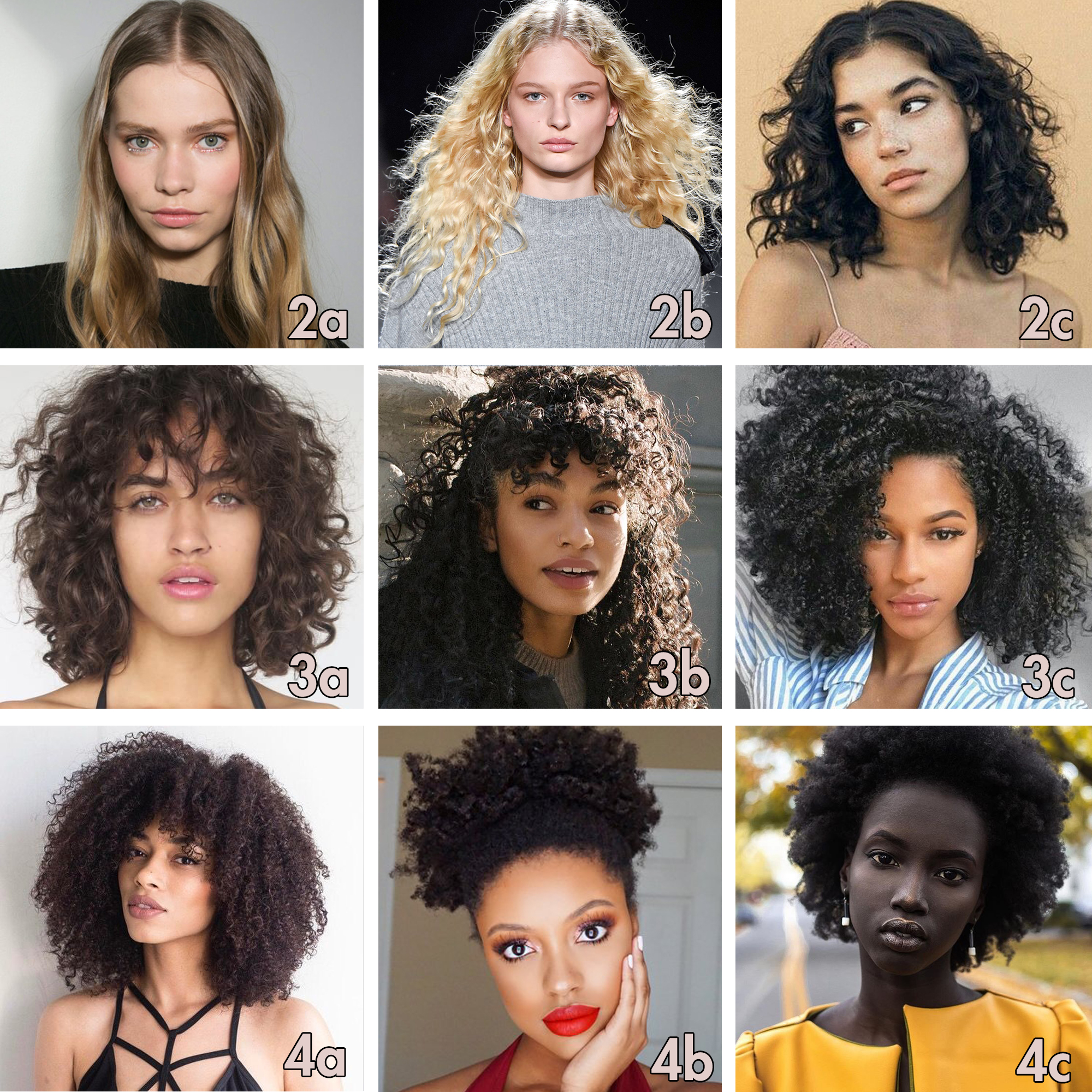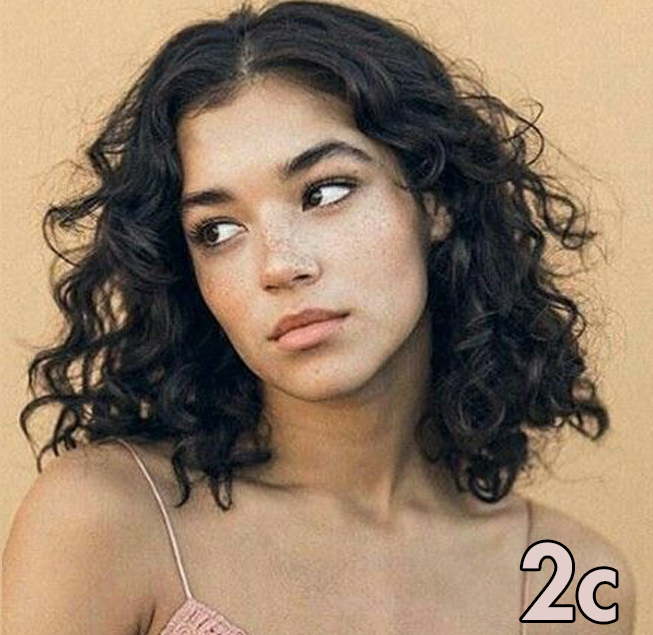What’s My Curly Hair Type and Why Does it matter?
By Blair Golden
Working in a Textured hair salon, we get asked a lot about hair type and curl/wave pattern. Despite the beliefs of some, Curly hair isn’t just one big category and, in fact, it encompasses a wide variety of wave and curl types - each with its own unique characteristics and care needs. The truth is that figuring out your curl pattern takes time and patience. Several different curl patterns can exist on the same head which can sometimes make it difficult to get your hair looking cohesive and put together when trying out certain styles.
Though the hair typing method, developed by Oprah’s own hairstylist Andre Walker, may not be a perfect science, it has proven to be helpful for many people trying to make sense of whats exactly is going on on top of their head. Discovering your curl pattern allows you to understand some of the unique characteristics that define your hair and how it behaves. Knowing this information will help you in making better product purchasing decisions and become more aware of the styling possiblities available to you.
Hair Type and curl pattern both describe the shape and size of your wave/curl which is determined by the shape of your hair follicle. Generally speaking, the Flatter or more oval shaped the follicle, the curlier your hair; the more circulare the cross-section, the straighter your hair. Additionally, your hairpattern is identified by the shape that the strands of hair make: Do they kink, curve or spiral? . Keep in mind that most texured-haired girls have multiple textures and pattern in their hair.
Hair types are broken up into 4 main groups (1, 2, 3, and 4) and each group is further divided into three sub-categories. The numbers describe the shape of the hair and the letters descirbe the size (width or diameter) of the curls themselves.
1= Straight; 2= Wavy; 3= Curly; 4= Kinky
A= wide; B=medium; C=tight.
Determining your Hair Type
Disclaimer: Keep in mind that if your hair has experienced any sort of dramatic chemical, environmental or heat damage, you most likely aret seeing your true hair texture ( you may also notice that your roots are curlier than your ends)
To determine yoru hair type, look at the chart above with showcases the differences between the hair types 2-4. Since you more than likely have more than one curl pattern and texture on your head, we recommend choosing the two pictures that look closest (ex: 3b/c)
Type 2 Hair
Your hair is type 2 if:
Your hair is wavy or S-shaped, ranging from very loose waves to deeper, tighter waves
You’re most concerned with reducing and controlling frizz, and finding styling products that hold your waves without weighing them down
You don’t struggle too much with your hair drying out and, in fact, it may get greasy if go more than 3-4 days without washing
Washing Tips
Though sulfates aren’t as damaging to type 3 textures as it is for curlier hair, we still recommend keeping away from them (especially 2c). We recommend a gentle shampoo like Davines- Dede
Make sure you use a cleansing shampoo to avoid greasy hair
Shampoo every 2-3 days (2a + 2b) ot 3-5 days (2c)
Moisturizing/ Nourishing tips
Natural oils (such as Olive oil, Jamaican Black Castor and coconut) are great for your hair and scalp, but they can make your hair look and feel greasy. Try using them as a pre-poo treatment, washing them out afterwards.
Deep condition your hair every two weeks
Styling Tips
Use a mousse or leave-in serum to style your hair (creams and gels will probably be too heavy and weigh down your hair)
You can afford to use heat tools more than other curl types but less is ALWAYS better.
2a’s have a fine, minimally waved texture thats super easy to straighten. Those with this texture should be wary of heavy styling products that can weigh down their delicate strands which will make them appear limp, lifeless and greasy (ick). 2a hair generally lacks volume at the root so Mateo recommends using an airy, water-based volume moose like Davines Liquid spell.
2b hair is flatter at the crown with defined S- shaped waves starting mid-way down the face. These strands are thicker than 2a and you’ll have to put in a bit of effort to get it straight. To enhance your natural surfer waves, we suggest using a natural sea salt spray like Davines- This is a sea salt spray.
2c waves are thick, coarse and susceptible to frizz. The S-Shaped curves of the hair are well defined and begin at the root. Use a non-lathering, sulfate-free shampoo to avoid stripping essential moisture from your strands. We like Davines -DeDe for this purpose.
TYPE 3 Hair
Your hair is Type 3 if:
Your hair curls in the form of spirals, ringlets, ranging in width from the width of sidwalk chalk to the width of a pencil.
You struggle to control frizz and keep your curls defined throughout the day
You often experience dry hair
Washing Tips:
Avoid Sulfates and other ingredients that can dry out your hair. Choose a gentle shampoo that won’t strip your hair of oils.
Shampoo once a week( and less often if your hair can manage) if you hair gets greasy mid-week, use a co-wash in-between washes
Moisturizing/Nourishing tips:
Try using humectants (especially during the warmer months) to attract moisture to you hair.
Use light oils to seal in moisture
Deep Condition every 1-2 weeks
Styling Tips
Use creams and gels to add definition, layer a moose over a cream while your hair is wet, or mix a leave-in with a light gel and apply to wet hair
Stay away from hot tools as much as possible
3a curls tend to be shiny with large, loose curls that are about the size of a piece of sidewalk chalk. Scrunch Davines curl building serum into your dry hair to help emphasize your curl texture. Make sure to keep your hands from touching your curls afterward or you may run the risk of excessive frizz, especially around the top of your head. To maintain your look until your next was, spray your hair with a curl refresher such as Davines- Curl Revitalizer.
3b hair types have course, springy ringlets with a circumference similar to a Sharpie. This hair texture can get dry at times, so look for stying gels that have humectants in the to attract moisture to the strand. Try Davines- This is a medium hold gel and make sure you apply while your hair is wet so that you can achieve definition without the frizz.
3c curls are tight corkscrews and are about the circumference of a straw. These densely packed strands have lots of volume and are prone to frizziness. We suggest using a sulfate-free creamy cleanser like the Davines- Love Cleansing Cream to keep your hair from drying out.
Type 4 Hair
You hair is type 4 if:
Your hair has a tight coily or zig-zag shape
You’re used to shrinkage and your hair tangles easily
Your hair dries out quickly, and your often concerned with keeping it moisturized
Washing Tips
Shampoo infrequently: no more than once a week and as little as once ever 2-3 weeks. Experiment to see what works for you
Avoid Sulfates at all along with other ingredients that dry out your hair.
If your har feels dirty in-between clarifying washes, us a co-wash (cleansing conditioner)
Moisturizing and Nourishing tips:
Use lots of conditioner on wet hair to help with moistura and detangling and look for products with a lot of slip. Be careful; your curls are very fragile!
Moisturize every day with a leave-in conditioner, moisturizer, or steam.
Use oils to seal moisture into your hair from roots to ends.
Deep condition ever 1-2 weeks
Styling Tips
Limit heat at all cost- it will dry out your hair and can eventually cause damage
For improved curl definition, use a light gel or styling butter to define your curls while damp.
Your hair is more fragile and prone to dryness and breakage than other hair types, so make sure to make use of protective styles to give your hair a chance to rest between highly manipulative styles
4a curls have a dense coil and springy S-pat that are about the size of a crochet need. Like all type 4 hair types, type 4a is prone to dryness(though not as vulnerable as those with 4b+4c hair types). Due to the naturally defined curls and their moisture retention capacity, “wash and go” hairstyles look great on women with 4a hair.
4b strands are densely packed and can bend in sharp angles like the letter Z. The curl is tighter and less defined - about the circumference of a pen or smaller- with strands that range from fine and thin to wiry and coarse. 4b hair often has a fluffly, cotton like appearance
4 c hair is similar to 4b textures, but the tightly coiled strands are more fragile and have a very tight zig-zag pattern that is sometimes indiscernible to the eye. To define 4c The hair strands in this hair type do not clump easily and so to define 4c patterned hair, you may need to braid, twist, or shingle through the hair strands. This hair type experiences the greatest amount of shrinkage- about 75% or more. Since shrinkage and dryness are major concerns for these tightly-coiled folks use a liberal amount of leave-in moisturizer,











